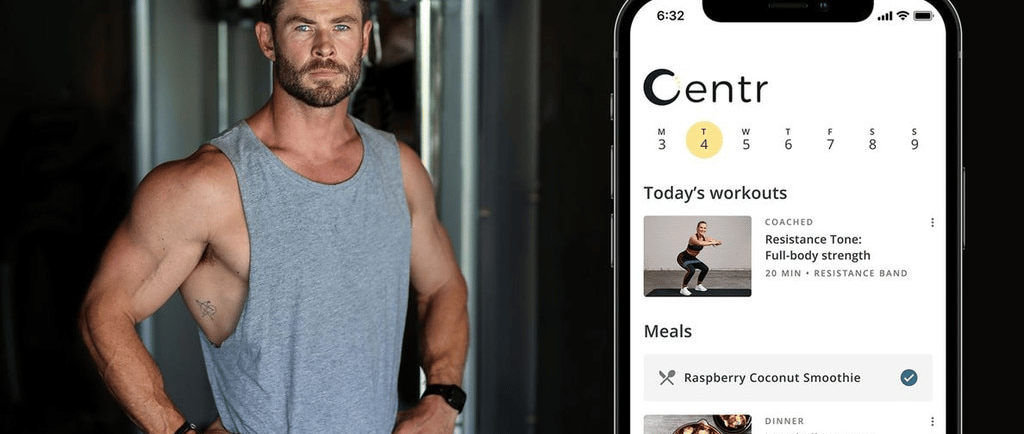When Stardust Fades: What the Closures at Centr Reveal About Celebrity Startups
Chris Hemsworth’s fitness app Centr has closed its Melbourne office and laid off 15 workers in a bid to consolidate operations in the U.S. This move underscores the tension between celebrity branding and business fundamentals, and offers lessons about scaling, authenticity, and resilience.
FITNESS


From silver-screen hero to fitness evangelist, Chris Hemsworth’s brand extension seemed built for longevity. Yet the recent decision by Centr to close its Melbourne office and lay off 15 Australian staff is a reminder that celebrity names do not immunize a company from hard restructuring. What lies behind this cutback is a story of global scaling tensions, brand expectations confronting operational imperatives, and lessons every entrepreneur should heed.
The Shift: What Centr Says — and What It Suggests
According to publicly reported statements, Centr has chosen to consolidate many of its functions in the U.S., citing a need for “operational and geographic efficiency.” News.com.au+1 The Melbourne hub, which had long served as the content, customer service, and regional marketing center for Australia, New Zealand, and Asia, will cease to operate, though a few employees will remain working remotely. 9News+1
Fifteen roles are affected in this current round. Notably, this is not the first contraction — prior to this, Centr had already cut around 20 roles in Australia in earlier restructuring efforts. 9News+1
To understand why this matters, one must look past the headlines and into the structural dynamics. Centr began in 2019, offering app-based fitness, nutrition, and wellness content anchored by Hemsworth’s brand appeal. Wikipedia+1 In 2022 it was acquired by HighPost Capital (co-founded by Mark Bezos), which expanded its business model to include physical fitness equipment. Wikipedia The shift toward hardware plus digital requires greater capital, deeper supply chains, more complex logistics, and often, tighter unit economics.
In that light, the Melbourne closure is less a failure of brand and more a recalibration of cost, scale, and alignment. Hemsworth’s identity still anchors the brand. But scale demands discipline: where to place offices, how to reduce duplication, how to leverage lower overheads in centralized jurisdictions. This is strategic trimming, not necessarily emotional failure.
Lessons from the Cutbacks: Brand, Structure, Expectation
1. Celebrity equity can open doors — not sustain them. Hemsworth’s star gave Centr early access to press, consumers, credibility. But audiences don’t pay forever. Over time value must rest on content quality, retention, margins, service reliability, and expansion strategy. When those do not align, even a celebrity-anchored brand faces hard trade-offs.
2. Complexity kills loyalty if not managed. Combining fitness content, wellness programming, meal plans, and hardware moves the business into multiple verticals. With each vertical comes supply chain risk, capital intensity, margin pressure, and operational complexity. If parts lag — say hardware margins or customer service in distant geographies — the brand identity is insufficient to cover gaps.
3. Structural arbitrage will be exploited. Shifting functions from Australia to U.S. jurisdictions may be justified by labor costs, tax advantages, easier capital access, or proximity to investors. But relocation or consolidation can erode the relationship with local talent, consumers, and regional authenticity. Employees who once anchored content and regional understanding may become disconnected relics.
4. Downturns expose optimism bias. Many founders, especially those working with celebrity narratives, start with large assumptions about scaling, user acquisition, or monetization. But when reality presses — slower growth, higher costs, supply friction — trimming becomes inevitable. The smart response is not denial but adaptability.
What This Moment Means for Stakeholders
For investors, the move signals that growth must be tightly controlled. Even brands that ride celebrity halo must show robust unit economics. Cuts are not always signs of failure but can be refocusing; yet too many layoffs may erode confidence unless paired with credible renewed strategy.
For employees, this is a cautionary tale that roles tied to regional offices are vulnerable in globalized structures. Flexibility, cross-functional skills, and visibility to core decision makers matter more than location.
For consumers, it is a reminder that product ethos — content, service, fulfillment — must deliver consistently. Brand intrigue may draw the first wave, but product substance keeps the second. If quality wavers with cuts, consumer trust erodes.
For leaders, particularly those guided by charismatic or public figures, the danger lies in overreliance on aura. Strategy, execution, culture, capital discipline — these remain the pillars that survive turbulence.
Takeaway: Reputation Changes, but Resilience Endures
At TMFS we believe that successful ventures carry two souls: aspiration and discipline. Celebrity can boost aspiration, but discipline must anchor growth. The closure of Centr’s Melbourne hub is not the end of a brand story — but a pivot. How that pivot is handled will define whether Centr consolidates into a stronger, leaner, more resilient global fitness brand — or enters a cycle of contraction and brand fatigue.
For founders, the lesson is clear: manage the narrative, but never let the narrative suppress the numbers. Align global ambitions with structural integrity. Build with redundancy, not frills. Retain capacity to trim nonessential parts without dismantling core.
If you are building a brand, particularly one anchored in reputation, commit early to designing systems that survive when the loud voice is silent. Let Hemsworth’s story not be a caution about celebrity, but a guide: brands born in light must thrive in shadows too.
As Centr recalibrates, watch whether it reanchors what made it alluring — content, community, trust — and rebuilds infrastructure that supports them, not stretches them. That is how narrative reclaims integrity.
All rights belong to their respective owners. This article contains references and insights based on publicly available information and sources. We do not claim ownership over any third-party content mentioned.From silver-screen hero to fitness evangelist, Chris Hemsworth’s brand extension seemed built for longevity. Yet the recent decision by Centr to close its Melbourne office and lay off 15 Australian staff is a reminder that celebrity names do not immunize a company from hard restructuring. What lies behind this cutback is a story of global scaling tensions, brand expectations confronting operational imperatives, and lessons every entrepreneur should heed.
The Shift: What Centr Says — and What It Suggests
According to publicly reported statements, Centr has chosen to consolidate many of its functions in the U.S., citing a need for “operational and geographic efficiency.” News.com.au+1 The Melbourne hub, which had long served as the content, customer service, and regional marketing center for Australia, New Zealand, and Asia, will cease to operate, though a few employees will remain working remotely. 9News+1
Fifteen roles are affected in this current round. Notably, this is not the first contraction — prior to this, Centr had already cut around 20 roles in Australia in earlier restructuring efforts. 9News+1
To understand why this matters, one must look past the headlines and into the structural dynamics. Centr began in 2019, offering app-based fitness, nutrition, and wellness content anchored by Hemsworth’s brand appeal. Wikipedia+1 In 2022 it was acquired by HighPost Capital (co-founded by Mark Bezos), which expanded its business model to include physical fitness equipment. Wikipedia The shift toward hardware plus digital requires greater capital, deeper supply chains, more complex logistics, and often, tighter unit economics.
In that light, the Melbourne closure is less a failure of brand and more a recalibration of cost, scale, and alignment. Hemsworth’s identity still anchors the brand. But scale demands discipline: where to place offices, how to reduce duplication, how to leverage lower overheads in centralized jurisdictions. This is strategic trimming, not necessarily emotional failure.
Lessons from the Cutbacks: Brand, Structure, Expectation
1. Celebrity equity can open doors — not sustain them. Hemsworth’s star gave Centr early access to press, consumers, credibility. But audiences don’t pay forever. Over time value must rest on content quality, retention, margins, service reliability, and expansion strategy. When those do not align, even a celebrity-anchored brand faces hard trade-offs.
2. Complexity kills loyalty if not managed. Combining fitness content, wellness programming, meal plans, and hardware moves the business into multiple verticals. With each vertical comes supply chain risk, capital intensity, margin pressure, and operational complexity. If parts lag — say hardware margins or customer service in distant geographies — the brand identity is insufficient to cover gaps.
3. Structural arbitrage will be exploited. Shifting functions from Australia to U.S. jurisdictions may be justified by labor costs, tax advantages, easier capital access, or proximity to investors. But relocation or consolidation can erode the relationship with local talent, consumers, and regional authenticity. Employees who once anchored content and regional understanding may become disconnected relics.
4. Downturns expose optimism bias. Many founders, especially those working with celebrity narratives, start with large assumptions about scaling, user acquisition, or monetization. But when reality presses — slower growth, higher costs, supply friction — trimming becomes inevitable. The smart response is not denial but adaptability.
What This Moment Means for Stakeholders
For investors, the move signals that growth must be tightly controlled. Even brands that ride celebrity halo must show robust unit economics. Cuts are not always signs of failure but can be refocusing; yet too many layoffs may erode confidence unless paired with credible renewed strategy.
For employees, this is a cautionary tale that roles tied to regional offices are vulnerable in globalized structures. Flexibility, cross-functional skills, and visibility to core decision makers matter more than location.
For consumers, it is a reminder that product ethos — content, service, fulfillment — must deliver consistently. Brand intrigue may draw the first wave, but product substance keeps the second. If quality wavers with cuts, consumer trust erodes.
For leaders, particularly those guided by charismatic or public figures, the danger lies in overreliance on aura. Strategy, execution, culture, capital discipline — these remain the pillars that survive turbulence.
Takeaway: Reputation Changes, but Resilience Endures
At TMFS we believe that successful ventures carry two souls: aspiration and discipline. Celebrity can boost aspiration, but discipline must anchor growth. The closure of Centr’s Melbourne hub is not the end of a brand story — but a pivot. How that pivot is handled will define whether Centr consolidates into a stronger, leaner, more resilient global fitness brand — or enters a cycle of contraction and brand fatigue.
For founders, the lesson is clear: manage the narrative, but never let the narrative suppress the numbers. Align global ambitions with structural integrity. Build with redundancy, not frills. Retain capacity to trim nonessential parts without dismantling core.
If you are building a brand, particularly one anchored in reputation, commit early to designing systems that survive when the loud voice is silent. Let Hemsworth’s story not be a caution about celebrity, but a guide: brands born in light must thrive in shadows too.
As Centr recalibrates, watch whether it reanchors what made it alluring — content, community, trust — and rebuilds infrastructure that supports them, not stretches them. That is how narrative reclaims integrity.
All rights belong to their respective owners. This article contains references and insights based on publicly available information and sources. We do not claim ownership over any third-party content mentioned.
